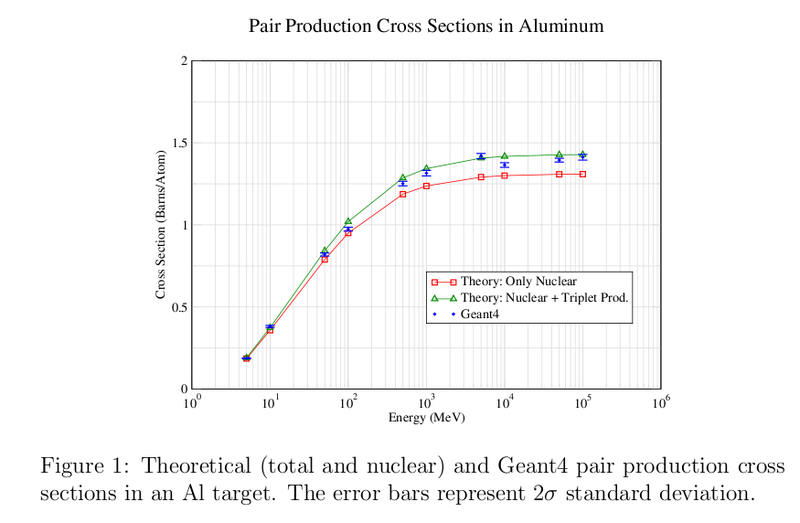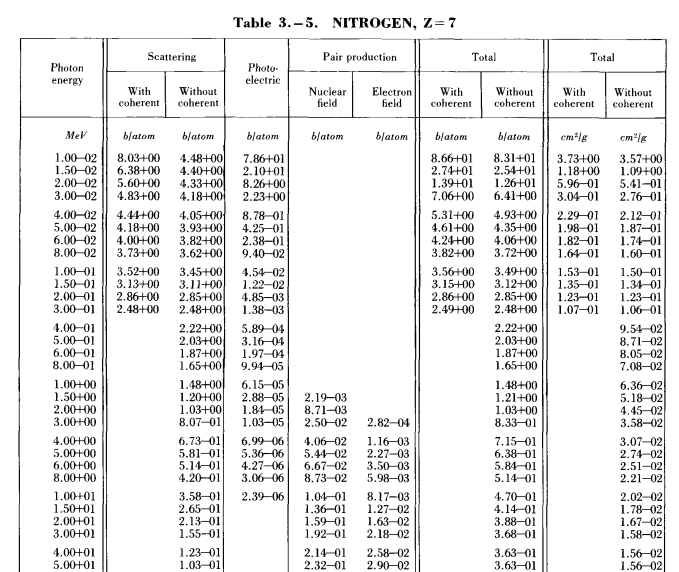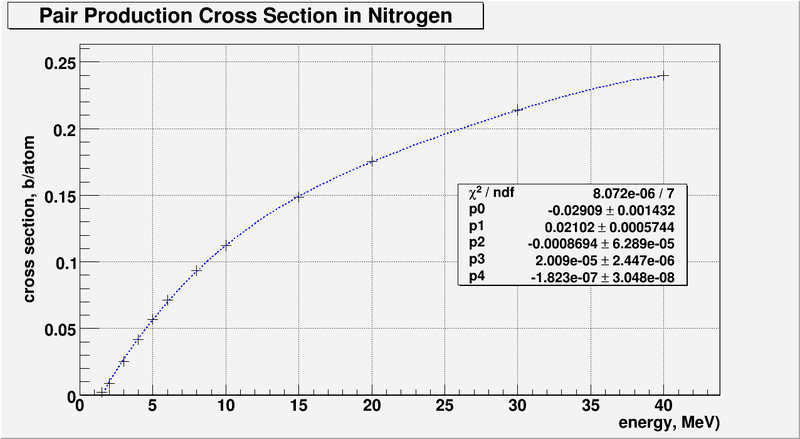Difference between revisions of "Pair Production Rate Calculation"
Jump to navigation
Jump to search
| Line 31: | Line 31: | ||
===1/2 mil of Al=== | ===1/2 mil of Al=== | ||
| − | #<math>\sigma_{brems}= | + | #<math>\sigma_{brems}=xxx\ \mbox{photons/electrons/MeV/r.l}</math> |
#<math>\mbox{r.l.(Ti)} = 3.59\ \mbox{cm}</math> | #<math>\mbox{r.l.(Ti)} = 3.59\ \mbox{cm}</math> | ||
#<math>\mbox{radiator}\ \mbox{thickness} = 12.5\ \mu m</math> | #<math>\mbox{radiator}\ \mbox{thickness} = 12.5\ \mu m</math> | ||
Revision as of 23:50, 29 January 2011
LINAC parameters used in calculations
1) pulse width 50 ps
2) pulse current 50 A
3) repetition rate 300 Hz
4) energy 44 MeV
Number of electrons/sec on radiator
Number of photons/sec out of Ti radiator
1/2 mil of Ti
Alex factor is 6.85 %
1/2 mil of Al
Alex factor is 6.85 %
Pair production rate
out of Al converter
(by varying width we can vary the yield)
through 1 m of air
Assume air consists entirely from Nitrogen:
Appendix
pair production cross sections in an Al target
Ref. Geant4 and Theoretical Pair Production Cross Sections for 1 MeV - 100 GeV photons in Aluminum. Vakho Makarashvili, December 18, 2007
pair production cross sections in a Nitrogen
Ref. Photon Cross Section, Attenuation Coefficients, and Energy Absorption Coefficients From 10 keV to 100 Gev. J.H.Hubbell. Center for Radiation Research.National Bureau of Standards. Washington, D.C. 20234
Here I just plotted the table above for pair production cross section in (0, 40) MeV energy region


